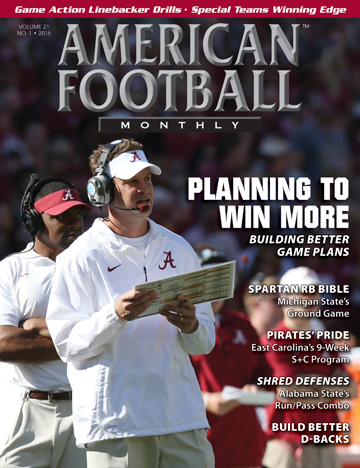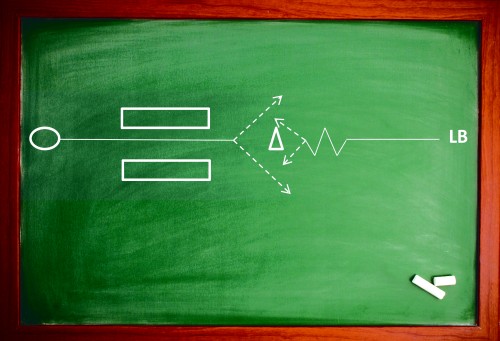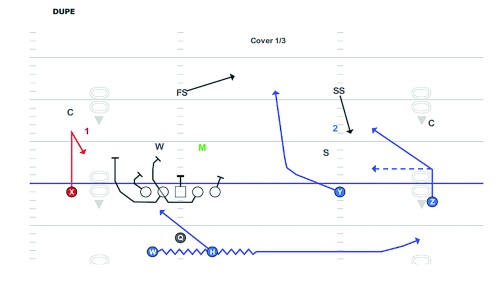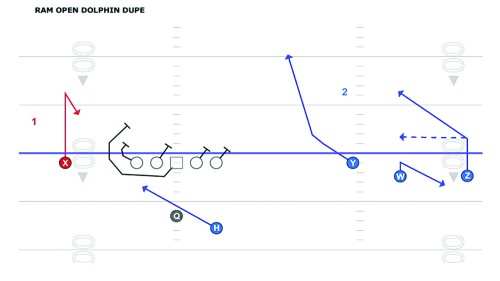Article CategoriesAFM Magazine
|
Simulating Game Action with 3 Linebacker Drillsby: Kelly LedwithDefensive Coordinator, Western State Colorado University © More from this issue We run a 3-4 based scheme, so we need to have quite a few different linebacker drills ready when fall camp starts. To make sure we can cover all of the skills that our players need for the season, I start with a chart. This chart changes slightly from year to year as I adjust what skills and techniques I feel our players need to have. I also add new drills that I see or take out drills I want to get rid of. Ultimately, I don’t want to have so many drills that I don’t have time to allow our LBs to excel at any of the skills. I also feel that our players need to utilize the athleticism that they have, and don’t want them to over-think the drills as we do them. The drills should become second nature quickly for our players. The chart lists the skills our LBs need and also drills that correlate to those skills. The three sections I use are “ABCs” which are our building blocks to being a successful LB, drills to be effective against the run and drills to be effective against the pass (See Chart). We don’t separate the drills for outside LBs and inside LBs or on-the-ball LBs and off-the-ball LBs because we make all linebackers go through all the drills. I want to see how effective each linebacker can be in each situation. This allows the players to be more versatile, which benefits both us as a team and the players as individuals. With that in mind, I created the chart for the season for all of our LBs with the goal to make sure that we improve our tackling, block destruction, turnovers, pass rush, coverage and reads. For this drill, start the ball carrier and the LB about 15 yards apart. At five yards from the ball, place two bags parallel to each other to provide a lane for the back. Two yards from the bags place a cone for the ball carrier to cut off of at a 45-degree angle. The LB needs to close the ground to the cone faster than the ball carrier to the bags. As the ball carrier enters the lane, the LB needs to start to shorten his stride and widen his base while continuing to gain ground. "Lock Out – Reload" is one of our favorite drills. The idea of the drill is to get a high volume of reps with your LBs creating separation from their blockers. The LB starts in a slightly crouched position leaning forward onto the “blocker.” The LB places his hands first with his inside hand on the chest of the blocker and the other hand on the side of the breast plate of the shoulder pads. The blocker then provides as much weight as he can by leaning on the LB and forcing the LB’s arms to coil between them. On the command – “Lock Out” – the LB will explode both arms out, creating separation from the blocker, while at the same time running his feet directly forward. On the second command - “Reload” - both players will reset right where they stand, without the LB letting go of his grip. This reload action should happen very quickly as the command to “Lock Out” will follow again as soon as everyone is set. We will do this 5 or 6 times a set. Then the partners switch and go back the other direction. We will do this drill for both players and use both hands.
Reads – 2-Man Reads from Close Range I turned this into was a drill where LBs line up two yards away from two offensive linemen. The LB lined up shaded between the two offensive linemen representing that gap as his own. I only give the OL two plays: zone steps and down/pull steps. For zone looks, I make both linemen move quickly in one direction while staying square. The LB must recognize the space between the two OL and fit downhill using a ‘Rip and Run’ technique. From this depth, our LBs were seeing the same hole and interpreting it as a closed off window because they thought it looked too small for a RB to run through. Up close, the LBs recognized that they could shoot through the window if they hit it hard enough. When the LB has leverage on a block as he would on a reach block, I teach a ‘Rip and Run’ technique as the block destruction. For the down/pull, have one OL block down on the LB and have the other OL pull in the opposite direction. The LB must recognize the puller and get over the top of the down block. I am hoping that they move quick enough to avoid a lot of contact. If there is contact, I teach them to use the Bull-Pull technique. I teach the ‘Bull-Pull’ when they are out leveraged by a block, as they would be by a down block (Diagram 3). I take most of my drills from other coaches that I have coached with, talked to, or seen speak at clinics. However, I am not afraid to make up any drill that simulates any action that I see my players encounter in a live situation. If I see players struggling with a movement, block, or a read, and I do not have a drill for it, I’ll create a drill that allows them to practice it and gives them a fighting chance when those situations come up on game day. p |
|
| HOME |
MAGAZINE |
SUBSCRIBE | ONLINE COLUMNISTS | COACHING VIDEOS |
Copyright 2024, AmericanFootballMonthly.com
All Rights Reserved







